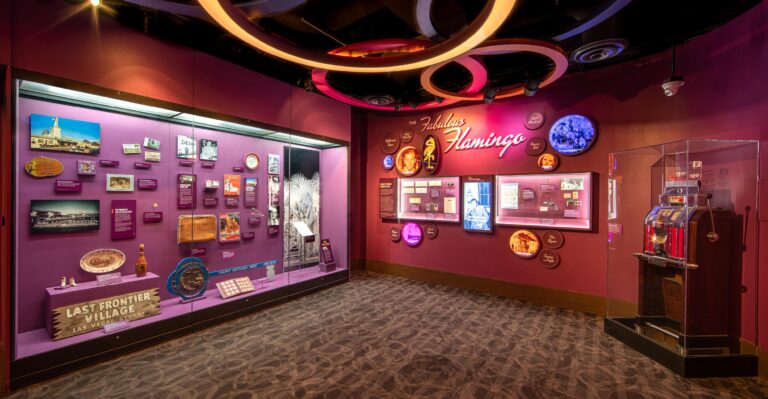Discovering The Mob Museum: A Deep Dive into AmericaŌĆÖs Organized Crime Legacy
Immersive Storytelling and Hands-On Exhibits at The Mob Museum
Located in the vibrant core of downtown Las Vegas, The Mob Museum offers an enthralling exploration of the intertwined histories of organized crime and law enforcement in the United States. This cultural landmark masterfully combines cutting-edge interactive displays with compelling narratives, allowing visitors to immerse themselves in the dramatic saga of the mobŌĆÖs rise and eventual decline. From meticulously recreated crime scenes to genuine historical artifacts, every exhibit is crafted to educate and engage.
Through multimedia presentations, live reenactments, and hands-on activities, guests gain insight into the complex relationships between notorious criminals and the agencies that pursued them. The museumŌĆÖs exhibits challenge traditional views of crime history by presenting detailed stories of landmark mob trials and the pivotal role of federal agencies like the FBI in dismantling criminal organizations. Highlights include:
- Forensic crime lab simulations where visitors can examine evidence firsthand
- Authentic 1940s courtroom environments offering immersive trial reenactments
- Rare archival footage and interviews featuring former law enforcement officials and mob figures
- Compelling oral histories that provide personal perspectives on the era
| Exhibit | Type of Experience | Approximate Duration |
|---|---|---|
| Forensic Crime Lab | Interactive | 30 minutes |
| Judicial Courtroom | Live Reenactment | 15 minutes |
| Oral History Recordings | Audio Narration | Varies |
| Historical Film Footage | Video Presentation | 20 minutes |
Authentic Artifacts: Unearthing the Tangible History of Organized Crime
The Mob MuseumŌĆÖs collection offers an unmatched window into the clandestine world of organized crime through genuine artifacts that narrate the stories behind infamous headlines. Visitors encounter everything from the weapons wielded in legendary shootouts to personal effects belonging to notorious mobsters, creating a palpable connection to the past. The museum also displays rare photographs, original court documents, and surveillance devices instrumental in law enforcementŌĆÖs efforts to dismantle criminal networks.
Interactive stations allow guests to delve into the complexities of mob operations and legal battles that shaped modern justice. The museum contextualizes these items within the broader socio-political environment that fostered the mobŌĆÖs growth. Noteworthy artifacts include:
- Period-authentic tommy guns and revolvers used in high-profile conflicts
- Original FBI case files and courtroom exhibits
- Personal correspondence and keepsakes from mob leaders
- Archival audio and video recordings from secret meetings and investigations
| Artifact | Importance | Year |
|---|---|---|
| Al CaponeŌĆÖs Trial Transcript | Demonstrates evidence collection against ChicagoŌĆÖs infamous crime boss | 1931 |
| Wiretapped Telephone | Crucial to FBIŌĆÖs surveillance tactics in the 1950s | 1952 |
| MobsterŌĆÖs Personal Diary | Offers insider views on mob operations | 1947 |
| Prohibition-Era Smuggling Gear | Highlights the ingenuity behind illegal liquor trafficking | 1920s |
Step Back in Time: The Underground SpeakeasyŌĆÖs Authentic Atmosphere
Venture below the lively streets of Las Vegas to discover a hidden speakeasy that perfectly captures the spirit of the 1920s prohibition era. This secretive lounge within The Mob Museum recreates the clandestine nightlife of the time, complete with password-protected entry and vintage d├®cor. The cozy space features exposed brick walls, antique chandeliers, and a polished mahogany bar bathed in warm amber light, evoking the intimate and mysterious ambiance of illicit gatherings.
Guests can savor expertly crafted cocktails inspired by infamous mobstersŌĆÖ favorite drinks while enjoying live jazz performances that echo the underground vibe. Key features include:
- Authentic Prohibition-era cocktail recipes prepared by skilled mixologists
- Period-appropriate furnishings and artifacts enhancing the immersive setting
- Exclusive entry procedures that add to the nostalgic experience
- Evening jazz ensembles that bring the speakeasy to life
| Feature | Description |
|---|---|
| Speakeasy Interior | 1920s-inspired with vintage lighting and exposed brick |
| Signature Cocktail | The Bugsy Siegel ŌĆō a smoky whiskey blend |
| Live Music | Jazz performances nightly |
| Admission | Requires separate ticket purchase |
Maximizing Your Visit: Practical Tips for Exploring The Mob Museum
To fully enjoy The Mob Museum, itŌĆÖs advisable to book timed tickets in advance, especially during peak periods like weekends and holidays, to bypass long lines. Focus on must-see exhibits such as the ŌĆ£St. ValentineŌĆÖs Day MassacreŌĆØ display and the interactive forensic lab. Be sure to grab a museum map or download their official app, which offers detailed details and personalized tour options tailored to your interests. Arriving early frequently enough means fewer crowds and a more immersive experience.
Additional recommendations for a seamless visit:
- Wear pleasant footwear as the museum spans several floors with numerous interactive stations.
- Allocate 2 to 3 hours to explore thoroughly without feeling rushed.
- Consider joining guided tours to gain deeper insights and behind-the-scenes stories.
- Plan a pause at the speakeasy bar to enjoy a unique blend of history and ambiance.
Final Thoughts: Why The Mob Museum is a Must-Visit in Las Vegas
The Mob Museum stands out as a thoughtfully curated institution that delves into the profound impact of organized crime on American history. By combining interactive exhibits with authentic relics, it offers visitors a rich, nuanced understanding that transcends sensationalized media portrayals. For those intrigued by the mobŌĆÖs enduring legacy amid Las VegasŌĆÖs dazzling exterior, this museum provides an essential, engaging experience. As the city continues to grow and transform, The Mob Museum preserves a gritty yet fascinating chapter of its past with professionalism and compelling storytelling.




